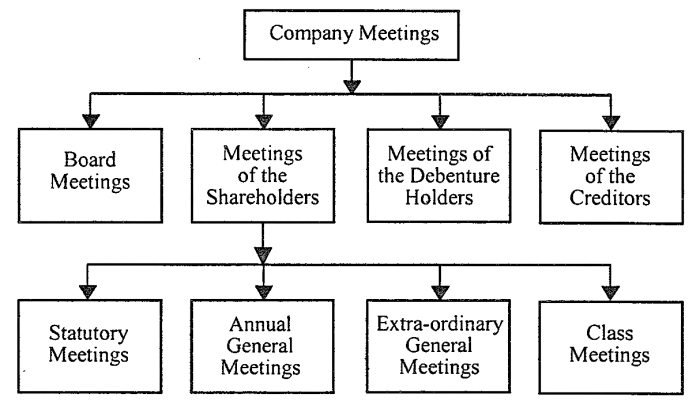Prospectus, Statements in view of prospectus
Sec. 2(36) of the Companies Act describes a prospectus as “any document issued as a prospectus and includes any notice, circular, advertisement or other document inviting deposits from the public or inviting offers from the public for the subscription or purchase of any share in, or debentures of a body corporate.”
In other words, it is a document which invites deposits from the public or invites offers from the public for the subscription of shares in, or debentures of, a company. The words “inviting deposits from the public” were added by the Companies (Amendment) Act, 1974.
Features and Characteristics of Prospectus:
(i) It is a document issued as a prospectus;
(ii) It is an invitation to the member of the public;
(iii) The public is invited to subscribe to the shares or debentures of the company;
(iv) It includes any notice, circular, advertisement inviting deposits from the public;
(v) It is a document by which the company procures its share capital needed to carry on its activities.
Forms and Contents of the Prospectus:
Sec. 56 states that every prospectus must
- State the matters specified in Part I of Schedule II, and
- Set out the reports specified in Part II of Schedule II.
The Statement in Lieu of Prospectus is a document filed with the Registrar of the Companies ( ROC ) when the company has not issued prospectus to the public for inviting them to subscribe for shares. The statement must contain the signatures of all the directors or their agents authorized in writing. It is similar to a prospectus but contains brief information. The Statement in Lieu of Prospectus needs to be filed with the registrar if the company does not issues prospectus or the company issued prospectus but because minimum subscription has not been received the company has not proceeded for the allotment of shares.
If a public company does not invite the public to subscribe for its shares but acquires to have money from private sources it may not issue a prospectus. In the circumstances, the promoters are required to prepare a draft prospectus which is known as ‘Statement in lieu of Prospectus’ which must contain the information required to be disclosed by Schedule III of the Act.
Sec. 70(1) states that a company having a share capital which does not issue a prospectus shall not allot any of its shares or debentures unless at least 3 days before the allotment of shares or debentures there has been delivered to the Registrar for registration a statement in lieu of prospectus.
The statement shall be signed by every person who is named therein as a director or proposed director of the company or by his authorised agent in writing. It shall be in the form and contain particulars set out in Schedule III of the Act.
Sec. 70(4) lays down that, in contravention of Sec. 70(1), the company and every director of the company, who wilfully authorizes or permits the contravention shall be punishable with fine which may extent to Rs. 1,000.
Similarly Sec. 70(5) also states that where the statement in lieu of prospectus contains any untrue statement, the persons responsible, for the issue thereof, may be punished by imprisonment which may extend to 2 years or with fine which may extend to Rs. 5,000, or with both.
Red Herring Prospectus:
A Red Herring Prospectus is a document which is submitted by an issuer company who intents to have public offerings of securities (i.e.; stock or bonds). It is associated with an Initial Public Offering (IPO). It must be filed with the Securities and Exchange Commission (SEC). The term Red herring comes from the tradition where young hunting dogs in Great Britain were trained in order to follow a scent by the use of ‘Red’ (i.e. salted and smoked) herring (i.e., kipper).
It is interesting to note that this pungent fish would be dragged across a trail until the puppy learned to follow the scent. But the term is used in prospectus simply due to disclosure statement which is printed in red ink on the cover which clearly states that the issuing company is not attempting to sell its shares.
Contents of Red Herring Prospectus:
(a) Purpose of the issue;
(b) Proposed offering Price Range;
(c) Promotion expenses;
(d) Copy of the underwriting agreement;
(e) Underwriter’s commission and discount;
(f) Disclosure of any option agreement;
(g) Balance Sheet;
(h) Net proceeds to the issuing company;
(i) Earning statement for .last three years;
(j) Legal option on the issue;
(k) Copies of the Articles of Incorporation of the issuer; and
(l) Names and addresses of all offices, underwriters, directors and stockholders owning 10% or more of the existing outstanding stock.
